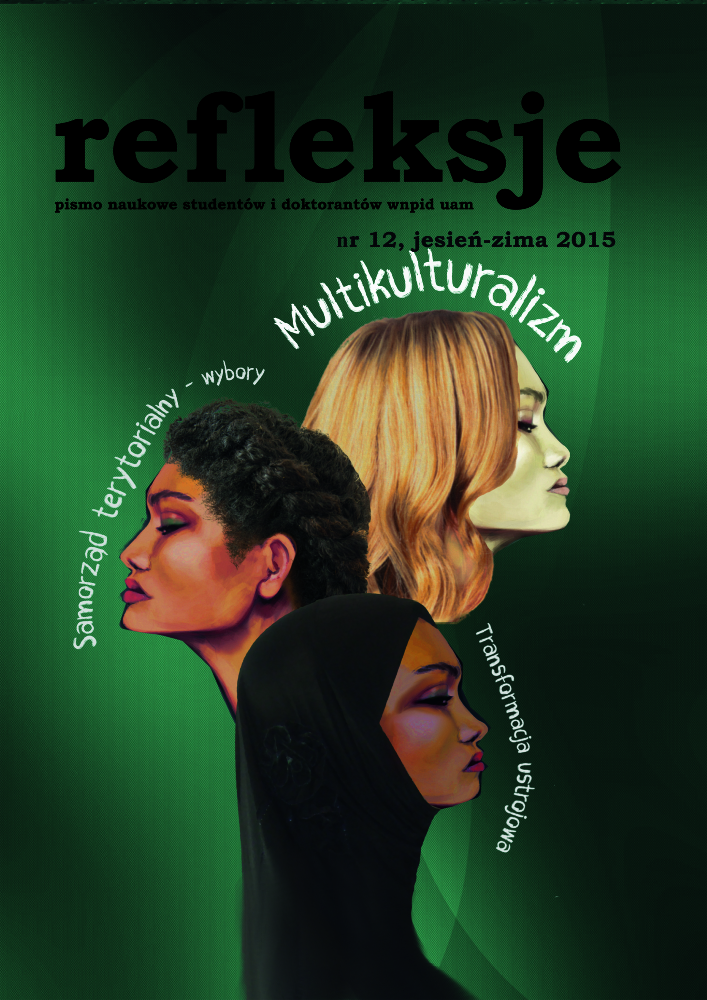Abstrakt
Identity construction is one of the fundamental human needs. The process takes place in two areas simultaneously: internal, self-reflexive and external, associated with a sense of belonging to a particular group. The Jews, until the beginning of the nineteenth century constituted quite uniform society voluntarily separating themselves from other communities. As a result of emancipation and assimilation processes, various influences affect their identity. As a consequence the Jews faced two difficulties. The first one was the dilemma between own nation and territorial homeland while the other was the progressing deep internal divisions. At present Jewish identity is most of all national and ethnical identity strongly reinforced by historical memory and fight with anti-Semitism. After the period of the twentieth century crisis and in the light of the western world secularization it has become also cultural identity.Identity construction is one of the fundamental human needs. Theprocess takes place in two areas simultaneously: internal, self-reflexiveand external, associated with a sense of belonging to a particulargroup. The Jews, until the beginning of the nineteenth century constitutedquite uniform society voluntarily separating themselves fromother communities. As a result of emancipation and assimilation processes,various influences affect their identity. As a consequence theJews faced two difficulties. The first one was the dilemma betweenown nation and territorial homeland while the other was the progressingdeep internal divisions. At present Jewish identity is most of allnational and ethnical identity strongly reinforced by historical memoryand fight with anti-Semitism. After the period of the twentieth centurycrisis and in the light of the western world secularization it hasbecome also cultural identity.
Bibliografia
Arendt H. (2008), Korzenie totalitaryzmu, część I i III przeł. Daniel Grinberg, część II Mariola Szawiel, t. 1, Wydawnictwa Akademickie i Profesjonalne, Warszawa.
Banaszak E. (2008), Tożsamość. Socjologiczne konceptualizacje, [w:] Oblicza tożsamości: perspektywa interdyscyplinarna, red. B. Zimoń-Dubowik, M. Gamian-Wilk, Wydawnictwo Naukowe Dolnośląskiej Szkoły Wyższej, Wrocław.
Collins J. J. (2000), Between Athens and Jerusalem. Jewish Identity in the Hellenistic Diaspora, wyd. 2, William B. Eerdmans Publishing Company, Grand Rapids, Michigan/Cambridge and Dove Booksellers, Livonia, Michigan.
Graham D., Staetsky L. D., Boyd J. (2014), Jews in the United Kingdom in 2013: preliminary findings from the National Jewish Community Survey,
styczeń 2014, strona internetowa Londyńskiego Instytutu Polityki Żydowskiej: http://www.jpr.org.uk/publication?id= 3351#.VZI5w1LSF9l, 28.06.2015.
Gruber R. E. (2002), A virtual Jewish world, [w:] Jewish Studies at the Central European University, red. E. Andor, A. Kovács, II, Budapest. Hertzberg A., Hirt-Manheimer A. (2001), Żydzi. Istota i charakter narodu, przeł. Beata Paluchowska, MADA, Warszawa.
Klugman A. (2003), Żyd – co to znaczy?, Wiedza Powszechna, Warszawa.
Kłoskowska A. (2005), Kultury narodowe u korzeni, Wydawnictwo Naukowe PWN, Warszawa.
Kolarzowa R. (2006), Wprowadzenie do tradycji i myśli żydowskiej, Wydawnictwo Uniwersytetu Rzeszowskiego, Rzeszów.
Kto jest Żydem?, internetowa Portalu Społeczności Żydowskiej w Polsce: http://www.jewish. org.pl/index.php/opinie-komentarze-mainmenu-62/231-kto-jest-mydem-.html, 30.06.2009.
Kultura żydowska w Europie (2002), fragment opracowania zatytułowanego „Mapping Jewish Culture in Europe today: a pilot project” wykonanego przez Londyński Instytut Polityki Żydowskiej, wstęp: S. Waterman, przeł. O. Zienkiewicz, strona internetowa Portalu Społeczności Żydowskiej w Polsce: http://www.jewish.org.pl/index.php/kultura
-i-sztuka-mainmenu-63/82-kulturaiydowska-w-europie.html, 21.06.2015.
Kwaśniewski K. (1982), Zderzenie kultur. Tożsamość a aspekty konfliktów i tolerancji, PWN, Warszawa.
Marcus I. G. (2004), The Jewish life cycle. Rites of Passage from Biblical to Modern Times, University of Washington Press, Seattle and London.
Nikitorowicz J. (1995), Pogranicze, tożsamość, edukacja międzykulturowa, Trans Humana, Białystok.
Rickert H. (2001), Człowiek i kultura, [w:] Wiedza o kulturze, część I: Antropologia kultury. Zagadnienia i wybór tekstów, oprac. G. Godlewski, L. Kolankiewicz, A. Mencwel, M. Pęczak, wstęp i red. A. Mencwel, Wydawnictwa Uniwersytetu Warszawskiego, Warszawa.
Sartre J-P. (1992), Rozważania o kwestii żydowskiej, przeł. i napisał przedmowę Jerzy Lisowski, Futura Press, Łódź.
Schweer T. (2003), Judaizm. Powstanie – historia – nauka, przeł. Paweł Pachciarek, VERBINUM Wydawnictwo Księży Werbistów, Warszawa.
Słownik języka polskiego PWN (1995), red. nauk. Mieczysław Szymczak, t. II, PWN, Warszawa.
Starnawski M. (2008), O reżimach identyfikacyjnych i dylematach tożsamości w diasporze, [w:] Oblicza tożsamości: perspektywa interdyscyplinarna, red. B. Zimoń-Dubowik, M. Gamian-Wilk, Wydawnictwo Naukowe Dolnośląskiej Szkoły Wyższej, Wrocław.
Szwed R. (2003), Tożsamość a obcość kulturowa. Studium empiryczne na temat związków pomiędzy tożsamością społeczno-kulturalną a stosunkiem do obcych, Wydawnictwo KUL, Lublin.
Unterman A. (2002, 2005), Żydzi. Wiara i życie, przeł. Janusz Zabierowski, wyd. trzecie, Książka i Wiedza, Warszawa.
Wine S. T., Żydowska alternatywa świecka (1989), przeł. K. Gradkowska, strona internetowa Portalu Społeczności Żydowskiej w Polsce: http://www.jewish.org.pl/index.php? option=com_content&task=view&id=51&Itemid=62, 18.06.2015.
Włodarczyk T. (2013), Świecka tożsamość polskich Żydów jako żydowska tożsamość alternatywna, [w:] „Studia Europaea Gnesnensia”, nr 8, część I – Idee.
